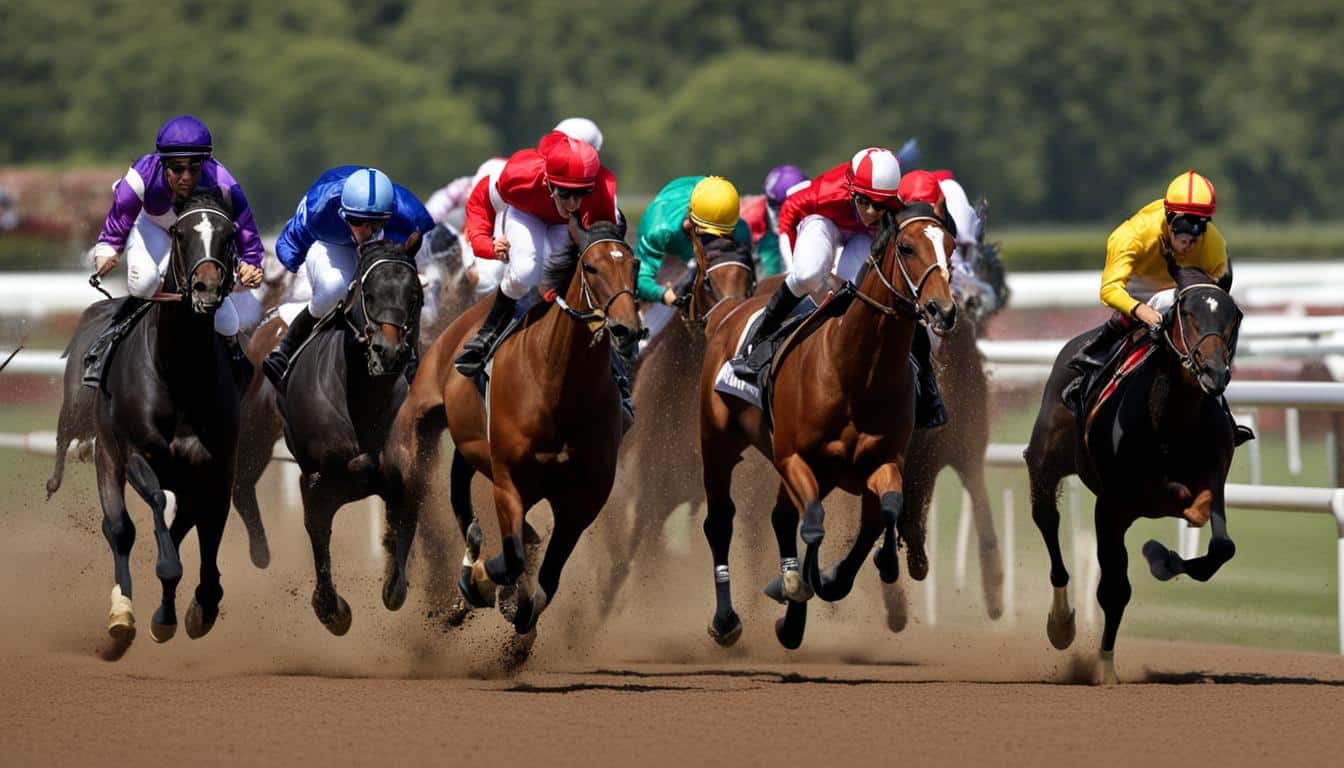Have you ever heard of the 80 20 rule in horse racing? It’s a strategy that many successful bettors use to improve their chances of winning. In this article, we’ll explore what the 80 20 rule is and how it can be applied to horse racing. By understanding this principle, you’ll be able to make informed decisions that can lead to more successful bets. Let’s get started!
Understanding the Pareto Principle
Have you ever heard of the Pareto Principle? Also known as the 80/20 rule, it states that roughly 80% of the effects come from 20% of the causes in a given system. This principle holds true for various fields, including horse racing.
When it comes to horse racing, the Pareto Principle suggests that a small percentage of factors contribute to the majority of outcomes. This means that a handful of key factors play a critical role in determining which horses are likely to win, place, or show in a race.
By focusing on these key factors, you can improve your betting strategy and increase your chances of success.

“The Pareto Principle is a valuable tool for identifying the few critical factors that have the biggest impact on horse racing outcomes. By understanding this principle, you can develop a more effective betting strategy and make more informed decisions.”
Applying the 80 20 Rule to Horse Racing
With the understanding of the Pareto principle and its significance in horse racing strategy, let’s explore how to apply the 80 20 rule to horse racing. The principle dictates that 80% of the results come from 20% of the causes, and therefore, we must focus our attention on identifying those crucial elements.
Firstly, ensure you analyze horse racing statistics with a sharp focus on the fundamental factors that have the greatest impact on performance. These include past performance, jockey, and trainer statistics, as well as track conditions. By identifying the key success factors, you can develop a more informed and effective betting strategy.

Moreover, it’s essential to focus on the quality of selections rather than the volume. Rather than placing a bet on every possible horse, narrow down your selection and focus on those that have the highest probability of winning. This approach aligns with the 80 20 rule and maximizes your chances of success.
Finally, it’s crucial to manage your bankroll effectively by utilizing the 80 20 rule. Allocate the majority of your funds to the top-performing horses and spread the rest among a few high-risk bets.
By applying the 80 20 rule in horse racing, you can significantly improve your betting strategy and increase your chances of wins.
Analyzing Horse Racing Statistics
When it comes to horse racing strategy, analyzing statistics is crucial for identifying key factors that align with the 80 20 rule. Past performance is a key statistic to consider when analyzing horses. This includes viewing their win/loss record, as well as their recent form. By assessing past performance, bettors can identify which horses may have an advantage based on their track record.
Jockey and trainer statistics are also crucial factors to consider when analyzing horse racing statistics. Some jockeys and trainers have a higher success rate than others, making their horses more likely to win or place. Additionally, track conditions such as weather and turf can also impact a horse’s performance. By factoring these elements into your analysis of horse racing statistics, you can make more informed betting decisions.
Using horse racing analysis to assess past performance, jockey and trainer statistics, and track conditions can provide insights on the key factors that align with the 80 20 rule. These insights can help improve your overall horse racing betting strategy.
Sample Table: Past Performance Analysis
| Horse Name | Win/Loss Record | Recent Form |
|---|---|---|
| Red Rover | 7/3 | 1,2,1,3,2 |
| Black Beauty | 5/5 | 2,1,1,1,1 |
| Silver Streak | 4/6 | 3,4,6,2,3 |
Note: This table is a sample and not based on real data.
Developing Effective Horse Racing Betting Strategies
Implementing the 80 20 rule in horse racing can help you to develop powerful betting strategies that maximize your returns. Here are some examples:
Value Betting
This strategy involves identifying horses with odds that are higher than their actual chance of winning. To apply this strategy effectively, it is essential to have a good knowledge of horse racing statistics and use them to inform your betting decisions. For example, if a horse has recently won a race with similar conditions to the one you are betting on, their odds may be more favorable than the bookies are suggesting.
Finding Overlays
An overlay is a situation where the odds offered by bookmakers are more favorable than the chances of the horse winning. To identify overlays, you need to compare the odds offered by different bookmakers and look for discrepancies. Keep in mind that this requires a considerable amount of research and analysis, but it can be a highly effective way of boosting your profits over time.
“To apply this strategy effectively, it is essential to have a good knowledge of horse racing statistics.”
Managing Bankroll Effectively
It is crucial to manage your bankroll effectively, regardless of which betting strategy you employ. Determine how much you are prepared to lose and don’t bet more than that amount. Avoid chasing losses by increasing your bets if things don’t go your way. Instead, stick to your predetermined budget and adjust your strategy accordingly based on your results over time.
By implementing these strategies, you can make more informed betting decisions and increase your chances of success when it comes to horse racing betting. Remember to always consider the 80 20 rule as you develop your strategies, focusing on the key success factors that will have the most significant impact on your betting outcomes.
Key Success Factors in Horse Racing
When implementing the 80 20 rule in horse racing, certain factors play an essential role in determining the outcomes of races. Understanding these key success factors is critical to devising a winning horse racing strategy.
Horse Form
One of the most critical success factors to consider is the horse’s recent form. Top-performing horses often carry this form into their next race, making them strong contenders. However, it’s essential to examine the severity of the horse’s recent form, as a sudden improvement from a previous poor performance may indicate a lowered chance of success in the upcoming race.
Distance Suitability
The distance of the race is another crucial factor to consider as not all horses excel at every distance. When analyzing horses, it’s essential to study their previous performances to determine the most suitable distance for each horse. This factor is particularly important when looking at horses moving up or down in distance.
Jockey-Trainer Combination
The jockey and trainer combination is often cited as a key factor in determining a horse’s likelihood of success. A reputable trainer working with an experienced jockey who understands the horse can transform an average performer into a winner. It’s therefore critical to consider the past performance of the jockey and trainer team.
“By studying these key success factors and applying the 80 20 rule, horse racing enthusiasts can maximize their betting strategy and achieve greater success.”
Conclusion
As we have seen in this article, the 80 20 rule is a crucial concept that can be applied to horse racing to improve betting strategies. By focusing on the key success factors that align with the Pareto Principle, bettors can achieve better results and increase their chances of success.
Through analyzing horse racing statistics and identifying the small percentage of factors that contribute to the majority of outcomes, bettors can develop effective betting strategies. From value betting to managing bankroll, there are various techniques that bettors can utilize by incorporating the 80 20 rule into their approach.
However, it’s essential to keep in mind that no betting strategy is foolproof, and there is always an element of risk involved in horse racing. Nonetheless, by understanding the Pareto Principle and utilizing it in horse racing betting, bettors can improve their odds and make more informed bets.
Ultimately, the 80 20 rule is a powerful tool that can help bettors make smarter decisions and improve their overall betting strategy. By focusing on the small percentage of factors that matter most, bettors can gain a significant edge in the highly competitive world of horse racing.
FAQ
What is the 80 20 rule in horse racing?
The 80 20 rule, also known as the Pareto Principle, states that approximately 80% of the outcomes result from 20% of the causes. In horse racing, it means that a small percentage of factors contribute to the majority of the results, and understanding and focusing on these factors can enhance betting strategy.
What is the Pareto Principle?
The Pareto Principle, also known as the 80 20 rule, is a concept that suggests that in many situations, around 80% of the effects come from 20% of the causes. In the context of horse racing, it means that a small number of factors have a significant impact on the outcomes of races.
How can the 80 20 rule be applied to horse racing?
To apply the 80 20 rule in horse racing, it is essential to identify the key success factors that contribute to the majority of race outcomes. These factors can include past performance, jockey and trainer statistics, and track conditions. By focusing on these factors and prioritizing them in betting strategy, bettors can improve their odds of success.
How can horse racing statistics be analyzed to align with the 80 20 rule?
Analyzing horse racing statistics involves studying past performance, jockey and trainer statistics, and track conditions to identify the key factors that align with the 80 20 rule. By focusing on these factors and disregarding less significant data points, bettors can make more informed decisions and improve their betting strategy.
What are some effective horse racing betting strategies that incorporate the 80 20 rule?
Some effective horse racing betting strategies to incorporate the 80 20 rule include value betting, which involves identifying horses that have a higher probability of winning than the odds suggest, and finding overlays, which are horses that offer higher odds than their actual chances of winning. Additionally, managing bankroll effectively and practicing sound money management principles can help maximize returns.
What are the key success factors in horse racing that align with the 80 20 rule?
Key success factors in horse racing that align with the 80 20 rule can include horse form, distance suitability, jockey-trainer combinations, and track conditions. These factors have a significant impact on race outcomes and should be prioritized in betting strategy to improve the chances of success.












